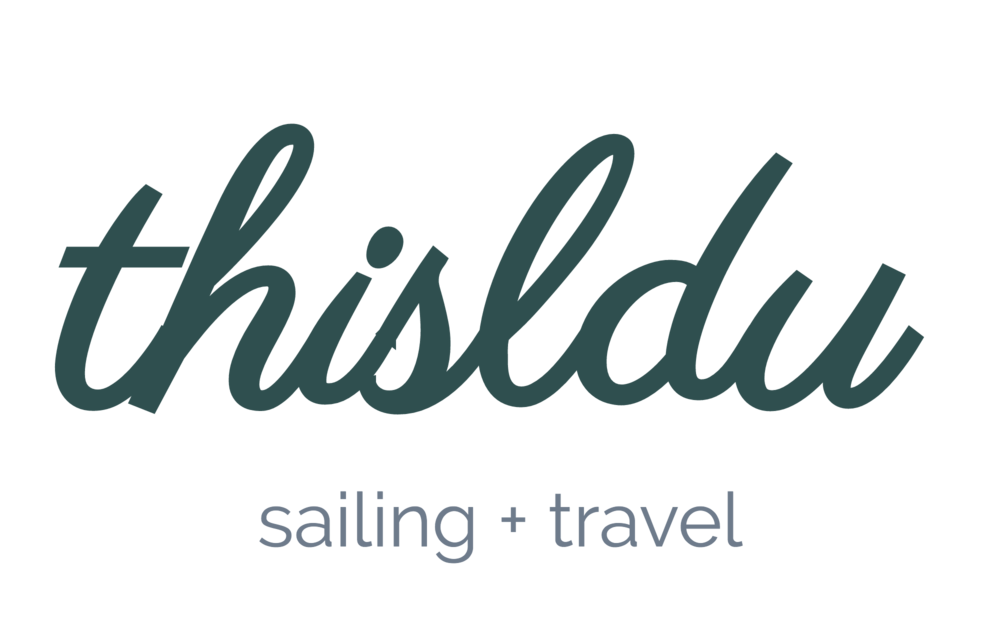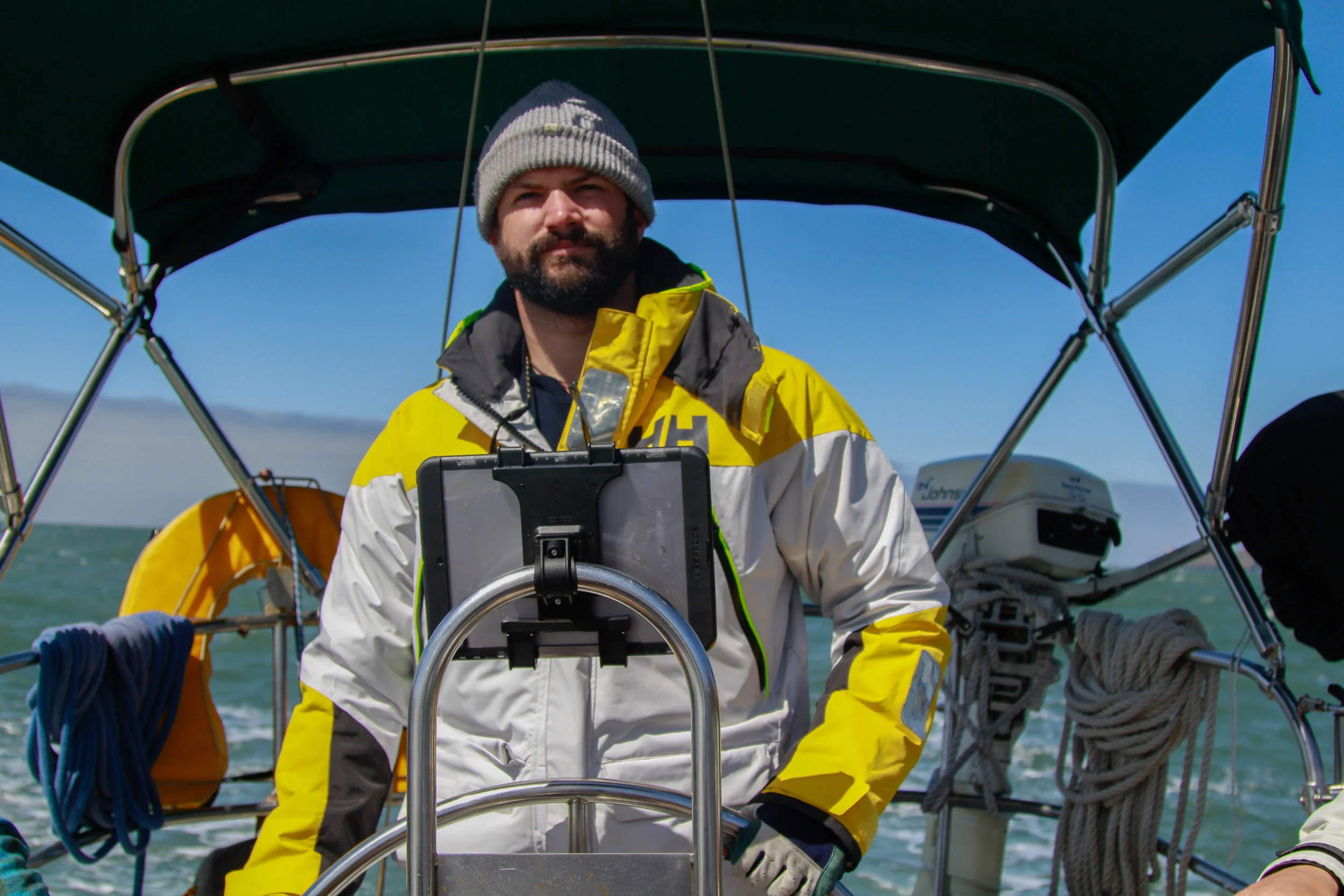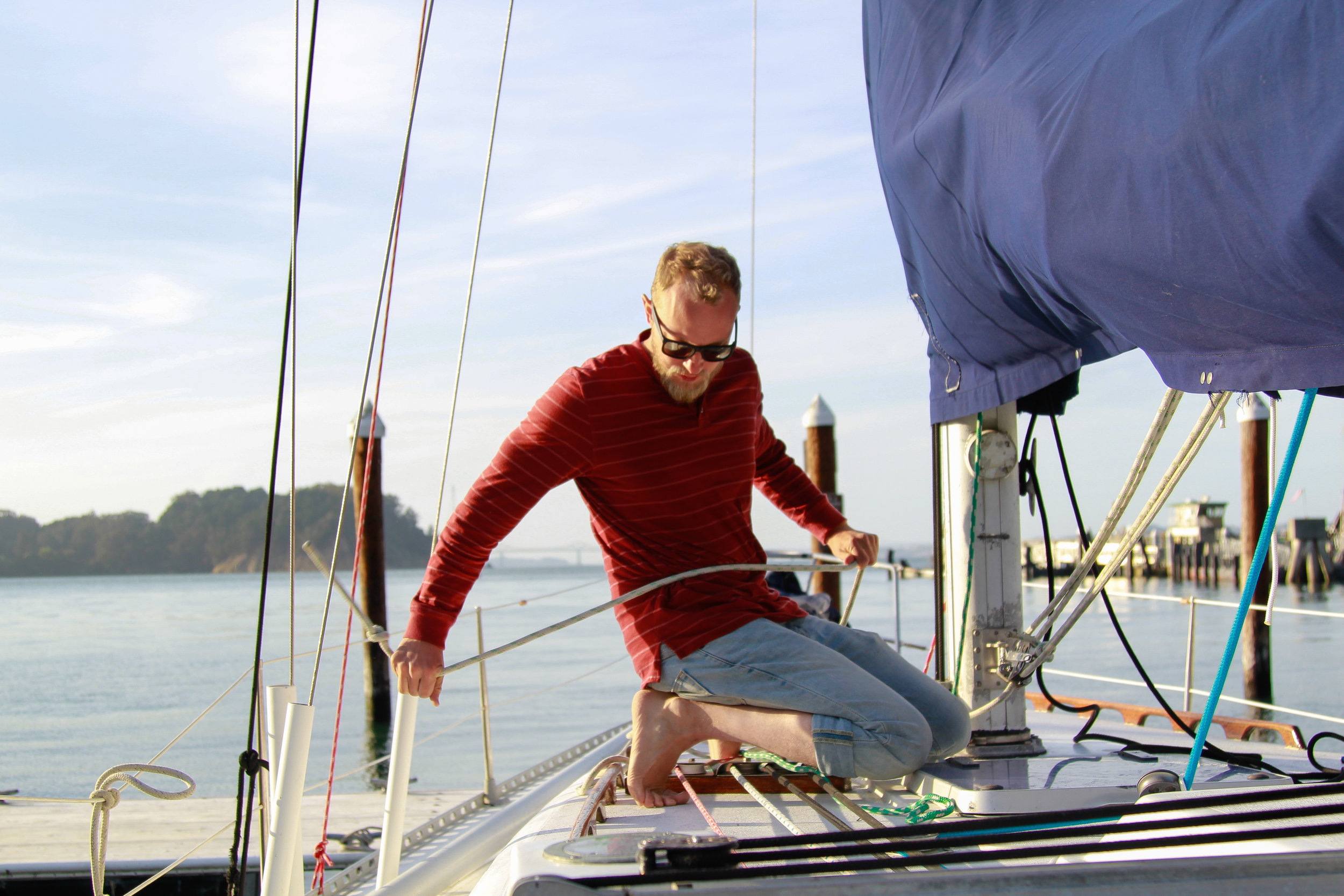When you sail, you're at the complete mercy of the elements. Wind, swell, currents, tides—there's a sweet spot where they all work together, but more often than not, they conflict.
This is something that I have to get used to.
Not only do I have to learn how to work with all of the elements, to learn how to best maneuver our sailboat in all types of conditions, but I also need to learn when to say, "it's too much out there - let's wait this one out."
That's the call we had to make on Saturday. We had planned for weeks to sail down to Half Moon Bay, but in the days leading up to our departure date, the weather started to take a turn. Our wind and navigation apps didn't bode well for a smooth sail. Still, we persisted; we figured we'd go sail past the Golden Gate, feel it out, and make a game-time decision.
Saturday morning started out eerily calm. The water in our marina was like glass; the air was still. But as soon as we approached the bridge, the wind picked up and the swell got choppy.
Our boat started teeter-tottering the minute we left the bay. The waves got bigger and the periods got shorter—soon enough, we were in 6' seas with 5-second periods. Winds were holding at 30 knots. Every once in a while, a stronger gust and a bigger wave would come through. Water crashed over the bow and splashed our faces. Everything outside—and a lot of things inside—of the boat got wet. I didn't get seasick exactly, but wasn't...well. My nerves got the better of me and I started to shake uncontrollably. A crewmember made his way to the stern, positioning himself to get sick. Things inside of the cabin were getting thrown around. It wasn't enjoyable, and it was starting to feel like too much. Worse yet, Sunday was forecasting stronger winds. It would have been a horrible trip back up the coast from Half Moon Bay.
Eventually, Garrett made the call to turn back. I stood behind his decision 100% and was proud of him for making the call. It takes a good sailing captain to assess the conditions—those of the elements and those of the crew—and make the best decision for all involved.
For context, we were accompanied by a fleet of boats participating in the Singlehanded Farallones Race; an extremely difficult race with extremely skilled sailors. Out of the 38 registrants, 10 no-showed, and 5 dropped out. They didn't want to sail in those conditions, either.
Once the decision was made, we spent an hour tacking back and forth toward San Francisco. We were flanked by gray whales—some as close as 30 yards off our bow—and welcomed their distraction as an antidote to our queasy bellies and wounded egos. Finally, we crossed under the bridge. We took a ceremonial pull of whisky to celebrate our safe arrival.
The day of sailing wasn't over, though. Garrett was determined to sail a total of 38 nautical miles to cover the same distance as to Half Moon Bay. From the Golden Gate we sailed to the city front, under the Bay Bridge, around Treasure Island, again under the Bay Bridge, and, eight hours after leaving Sausalito, ended at Angel Island.
When we got to Angel Island, we celebrated. Drinks were poured and lunch was made. Our buddy boat, who at first decided to keep heading toward Half Moon Bay, eventually pulled into the slip next to us. We drank, we ate, we talked about the day. We danced and watched the sunset. We celebrated being warm and dry and still.
We spent the night and woke to a sunny, warm Sunday morning. Slowly, we made our way out of the cove and toward home—but not without raising our sails first. Praising Garrett's decision from the day before to steer us away from bad conditions and toward something much better, we danced in the sunshine and marveled in the beauty of our big, blue watery back yard.
When I look back on last weekend, I feel grateful for the experience that we had and the lessons we learned. And, most importantly, knowing this:
We didn't give up—we just changed course.























